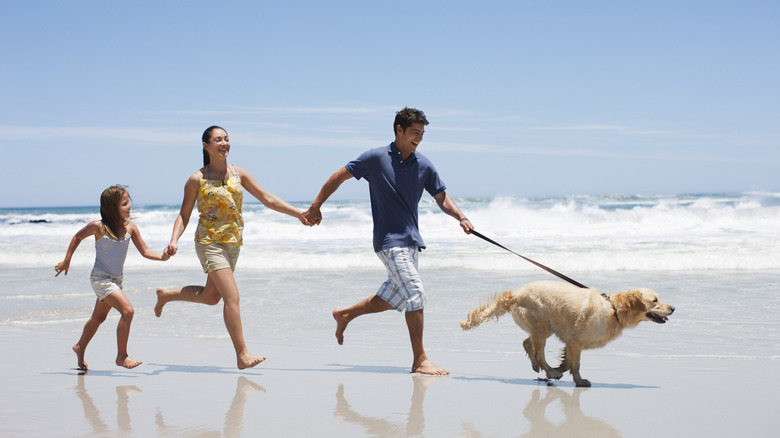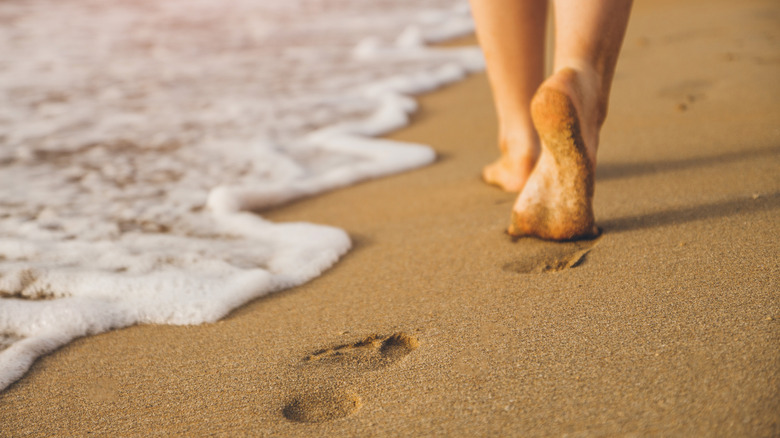Is It Good Or Gross To Go Barefoot In The Sand On Your Next Beach Vacation?
We may receive a commission on purchases made from links.
If you're heading to the beach during your vacation, you're probably looking forward to a barefoot stroll in the sand. It's part of the experience, whether you're walking in the whitest sand in the world at Mexico's Tulum Beach, exploring the shores of a Greek island, or braving the chill at a black sand beach in Iceland. Still, you may wonder whether it's actually gross to go barefoot or if there could be benefits to ditching your sandals. While it's certainly possible that you'll say "ew" after stepping in a pile of slimy seaweed or a bit of tar that's washed up, or "ouch" when you burn your feet on some sand that's been baking in the sun, going shoeless can be really beneficial for your health.
Shoes aren't a natural part of our body. While they protect our feet from the ground, barefoot walking uses our foot and leg muscles in a natural manner. In addition, you're going to burn more energy as your feet find purchase in the soft sand (note that wet sand offers more stability and may be better for running). In fact, some estimates suggest that you use up to 2.7 times more energy when walking on sand. You may also burn up to 50% more calories in soft sand than when walking on a hard surface. If you're beach-walking after a meal, so much the better, as walking in general may help you digest food faster.
The benefits of walking barefoot in the sand
Sand moves where pavement doesn't, so you're going to be working a bit harder for balance, which can help you with your strength and stability over time. Another surprising benefit of sand-walking is improved proprioception. Basically, proprioception is your body's ability to sense its movement and stability, and where it is in space, using the roughly 200,000 nerve endings found on each foot. Sand may stimulate those nerve endings more than walking in shoes. Plus, you may be able to skip a pedicure scrub or two at your resort's spa, as the sand gives your feet some exfoliation as you walk or run barefoot. If you've been having issues with your gait, another benefit is that you can really get a sense from your footprint in terms of whether you're striking too hard on your heels or the balls of your feet when walking or running in wet sand.
There is one major drawback to walking in the sand, of course, and that's the potential for injuries from sharp objects. It helps to scan the ground as you're walking to avoid glass or other debris, and avoid going barefoot on dirty or polluted beaches. It can also be frustrating having sand stuck to your feet after your beach day is finished. There are a few things you can do beyond just rinsing in water. First, pack some baby powder or cornstarch, which can help get all the sand off your body fast. You can also bring a paintbrush to the beach to brush off the sand. Opt for a brush with really stiff bristles, like the two-piece Remerry Beach Sand Remover Brush with Drawstring Bag on Amazon for under $20.

